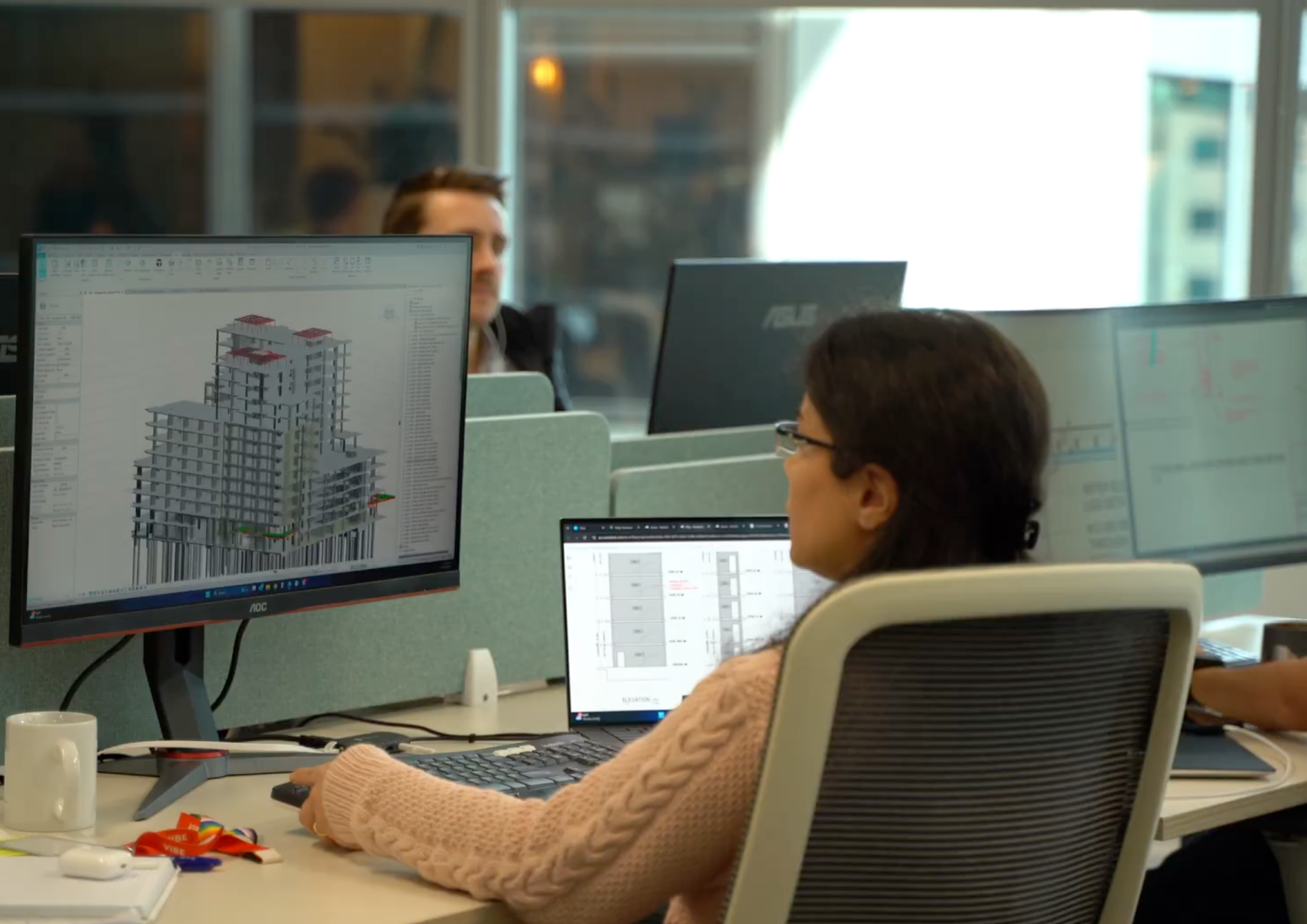As the construction industry returns refreshed from a well-deserved break, Matter is looking ahead to the trends set to shape the built environment in Australia in 2025 and beyond. The industry is navigating a period of rapid transformation, driven by economic pressures, technological innovation, sustainability demands, and shifting political priorities.
Key building sectors, such as tertiary education, residential (particularly social and affordable housing), government and industrial developments, are leading this evolution.
In this article, we’ll delve into the trends shaping these sectors and share how we’re positioning ourselves to provide exceptional value to our clients in this dynamic and ever-evolving landscape.
Economic Challenges and Opportunities
The current economic climate poses significant challenges to project feasibility across the Australian built environment. Rising costs and tightening financial margins mean that projects often struggle to stack up. For developers and stakeholders in both private and public sectors, mitigating risks for projects from the outset and unlocking opportunities before committing to schematic designs has become paramount.
At Matter, we’ve embraced cutting-edge tools and techniques to address these challenges head-on. For example, collaborating with Neuron, we’ve integrated their structural analysis tool into our workflow, enabling clients to assess the cost implications of multiple design options in minutes rather than weeks. This speed and precision provide a significant edge in early decision-making.
Our newly established civil engineering team headed up by Davood Khalili has also adopted advanced modelling techniques that enhance project feasibility. By refining civil designs, we’ve achieved measurable savings in bulk earthworks and stormwater infrastructure costs. These innovations not only improve economic viability but also reinforce our commitment to delivering cost-effective, practical solutions for our clients.
Building on Digital Design Collaboration
The evolution of BIM is reshaping how we collaborate on projects. Increasingly, the industry is gravitating towards Autodesk Construction Cloud as a comprehensive solution for document control, coordination and project management. This shift is evident among architects, engineers and even contractors, who are exploring ACC to streamline workflows from project inception to construction and beyond.
ACC’s end-to-end capabilities create a common data environment, fostering seamless and up-to-date communication and collaboration across disciplines. At Matter, we’re excited to embrace and leverage these advancements in the industry, ensuring that our BIM models and documentation align with this approach to project delivery.
Environmental and Sustainability
Sustainability continues to take centre stage in the built environment and is one of Matters’s core values being a B corp certified company. Designing to achieve five-star GreenStar ratings is fast becoming the industry norm (and soon to be mandated), presenting an exciting opportunity to explore and promote environmentally responsible materials.
Mass timber and green concrete are two such materials that we’ve been actively involved in. Mass timber offers a sustainable alternative to traditional steel and concrete, with a lower carbon footprint and compelling aesthetic and structural benefits. Similarly, green concrete—produced with reduced embodied carbon—is gaining traction as a viable and cost-effective option.
By championing these materials and offering carbon reporting, we’re helping our clients meet regulatory requirements, contributing to a greener, more sustainable built environment.
Evolving Construction Techniques
High construction costs and labour market shortages continue to challenge the viability of projects, making value engineering a highly sought-after service. At Matter, our peer review services are increasingly in demand, providing clients with opportunities to save on material costs while simultaneously mitigating risks for construction programs.
Through our analysis-backed value-driven recommendations, we’ve helped clients navigate escalating prices without compromising on quality, speed of construction or performance. Our focus remains on delivering efficient, buildable, and robust designs that support project success at every stage.
Political and Regulatory Shifts
The introduction of tax concessions for Build-to-Rent developments is a welcome boost for the sector, incentivising investment and construction. These concessions are likely to spur growth in BTR projects, providing an opportunity to rethink how we design and deliver these developments.
By aligning our services with these incentives, we aim to help our clients capitalise on this favourable policy environment and deliver projects that set new benchmarks for quality and efficiency.
Looking Ahead
The built environment in Australia is on the cusp of significant transformation, driven by economic pressures, technological advancements, environmental considerations, and regulatory changes. For developers in both the public and private sectors, navigating these trends will require a forward-thinking approach and a commitment to innovation.
At Matter, we’re proud to be at the forefront of these changes. By embracing new tools, engaging in collaborative design, championing sustainability, and delivering value-driven solutions, we’re helping our clients turn challenges into opportunities. Together, we can shape a built environment that is resilient, efficient, and future-ready.
